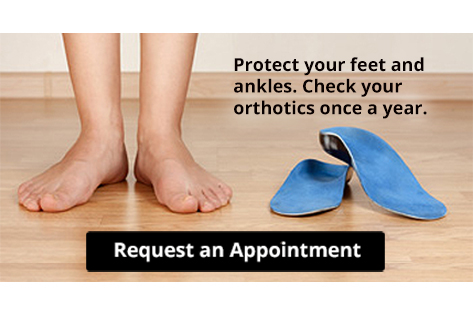Blog
Risk Factors for Morton’s Neuroma
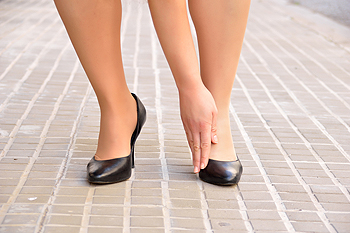 Morton’s neuroma is a condition that causes pain in the ball of the foot, typically in between the third and fourth toe. It occurs when tissue thickens around a nerve. Although there are usually no external symptoms, it may feel as though you are standing on a pebble. It could also cause a burning sensation and numbness in the toes. Morton’s neuroma tends to affect specific groups of people more than others. For example, if you often wear high heels, you could be at risk for developing Morton’s neuroma. Athletes who engage in high-impact activity and wear tight shoes could find themselves with this ailment, as well. Finally, people with prior foot complications, such as bunions or hammertoes, are known to get Morton’s neuroma more often than the average person. If you feel like you may have this condition, be sure to consult with a podiatrist.
Morton’s neuroma is a condition that causes pain in the ball of the foot, typically in between the third and fourth toe. It occurs when tissue thickens around a nerve. Although there are usually no external symptoms, it may feel as though you are standing on a pebble. It could also cause a burning sensation and numbness in the toes. Morton’s neuroma tends to affect specific groups of people more than others. For example, if you often wear high heels, you could be at risk for developing Morton’s neuroma. Athletes who engage in high-impact activity and wear tight shoes could find themselves with this ailment, as well. Finally, people with prior foot complications, such as bunions or hammertoes, are known to get Morton’s neuroma more often than the average person. If you feel like you may have this condition, be sure to consult with a podiatrist.
Morton’s neuroma is a very uncomfortable condition to live with. If you think you have Morton’s neuroma, contact Dr. Kevin Davis of Davis Foot & Ankle Centers. Our doctor will attend to all of your foot care needs and answer any of your related questions.
Morton’s Neuroma
Morton's neuroma is a painful foot condition that commonly affects the areas between the second and third or third and fourth toe, although other areas of the foot are also susceptible. Morton’s neuroma is caused by an inflamed nerve in the foot that is being squeezed and aggravated by surrounding bones.
What Increases the Chances of Having Morton’s Neuroma?
- Ill-fitting high heels or shoes that add pressure to the toe or foot
- Jogging, running or any sport that involves constant impact to the foot
- Flat feet, bunions, and any other foot deformities
Morton’s neuroma is a very treatable condition. Orthotics and shoe inserts can often be used to alleviate the pain on the forefront of the feet. In more severe cases, corticosteroids can also be prescribed. In order to figure out the best treatment for your neuroma, it’s recommended to seek the care of a podiatrist who can diagnose your condition and provide different treatment options.
If you have any questions, please feel free to contact one of our offices located in Springfield, and White House, TN, . We offer the newest diagnostic and treatment technologies for all your foot care needs.
Read more about Morton's NeuromaPossible Reasons for Gout Attacks
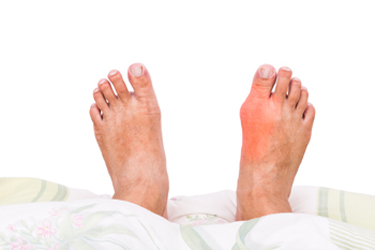 People who experience gout attacks will most likely have severe pain and discomfort surrounding the big toe. It occurs as a result of crystals that develop from excess uric acid in the bloodstream. Research has indicated that men are more prone to developing gout than women, and the risk increases if obesity is a factor. Additionally, gout can develop if the patient has kidneys that are not functioning properly, or has high blood pressure. Some of the symptoms that are associated with this condition often include swelling on the big toe and surrounding areas, redness, and tenderness when touched. If you have frequent gout attacks, it is strongly advised that you seek the counsel of a podiatrist who can properly diagnosis and treat this painful condition.
People who experience gout attacks will most likely have severe pain and discomfort surrounding the big toe. It occurs as a result of crystals that develop from excess uric acid in the bloodstream. Research has indicated that men are more prone to developing gout than women, and the risk increases if obesity is a factor. Additionally, gout can develop if the patient has kidneys that are not functioning properly, or has high blood pressure. Some of the symptoms that are associated with this condition often include swelling on the big toe and surrounding areas, redness, and tenderness when touched. If you have frequent gout attacks, it is strongly advised that you seek the counsel of a podiatrist who can properly diagnosis and treat this painful condition.
Gout is a painful condition that can be treated. If you are seeking treatment, contact Dr. Kevin Davis from Davis Foot & Ankle Centers. Our doctor will treat your foot and ankle needs.
What Is Gout?
Gout is a form of arthritis that is characterized by sudden, severe attacks of pain, redness, and tenderness in the joints. The condition usually affects the joint at the base of the big toe. A gout attack can occur at any random time, such as the middle of the night while you are asleep.
Symptoms
- Intense Joint Pain - Usually around the large joint of your big toe, and it most severe within the first four to twelve hours
- Lingering Discomfort - Joint discomfort may last from a few days to a few weeks
- Inflammation and Redness -Affected joints may become swollen, tender, warm and red
- Limited Range of Motion - May experience a decrease in joint mobility
Risk Factors
- Genetics - If family members have gout, you’re more likely to have it
- Medications - Diuretic medications can raise uric acid levels
- Gender/Age - Gout is more common in men until the age of 60. It is believed that estrogen protects women until that point
- Diet - Eating red meat and shellfish increases your risk
- Alcohol - Having more than two alcoholic drinks per day increases your risk
- Obesity - Obese people are at a higher risk for gout
Prior to visiting your podiatrist to receive treatment for gout, there are a few things you should do beforehand. If you have gout you should write down your symptoms--including when they started and how often you experience them, important medical information you may have, and any questions you may have. Writing down these three things will help your podiatrist in assessing your specific situation so that he or she may provide the best route of treatment for you.
If you have any questions, please feel free to contact one of our offices located in Springfield, and White House, TN, . We offer the newest diagnostic and treatment technologies for all your foot care needs.
Read more about GoutCauses of Flat Feet
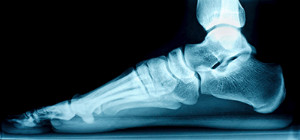 The medical condition that is referred to as flat feet occurs when the arch is missing from the foot. Most babies are born with flat feet, and the arch typically develops in the first few years of life. Some patients have flat feet as an adult, which can occur as a result of illness or injuries. Some of the symptoms that are associated with this condition include pain while standing for extended periods of time, in addition to an achy feeling in the ankles. Treatment of flat feet may begin with wearing orthotics in your shoes that can provide additional support. Pain and discomfort may be reduced when a healthy lifestyle is implemented. This can include losing excess weight, which may put pressure on the feet, in addition to performing a gentle exercise routine. If you have questions about flat feet, it is suggested that you speak to a podiatrist who can properly treat this condition.
The medical condition that is referred to as flat feet occurs when the arch is missing from the foot. Most babies are born with flat feet, and the arch typically develops in the first few years of life. Some patients have flat feet as an adult, which can occur as a result of illness or injuries. Some of the symptoms that are associated with this condition include pain while standing for extended periods of time, in addition to an achy feeling in the ankles. Treatment of flat feet may begin with wearing orthotics in your shoes that can provide additional support. Pain and discomfort may be reduced when a healthy lifestyle is implemented. This can include losing excess weight, which may put pressure on the feet, in addition to performing a gentle exercise routine. If you have questions about flat feet, it is suggested that you speak to a podiatrist who can properly treat this condition.
Flatfoot is a condition many people suffer from. If you have flat feet, contact Dr. Kevin Davis from Davis Foot & Ankle Centers. Our doctor will treat your foot and ankle needs.
What Are Flat Feet?
Flatfoot is a condition in which the arch of the foot is depressed and the sole of the foot is almost completely in contact with the ground. About 20-30% of the population generally has flat feet because their arches never formed during growth.
Conditions & Problems:
Having flat feet makes it difficult to run or walk because of the stress placed on the ankles.
Alignment – The general alignment of your legs can be disrupted, because the ankles move inward which can cause major discomfort.
Knees – If you have complications with your knees, flat feet can be a contributor to arthritis in that area.
Symptoms
- Pain around the heel or arch area
- Trouble standing on the tip toe
- Swelling around the inside of the ankle
- Flat look to one or both feet
- Having your shoes feel uneven when worn
Treatment
If you are experiencing pain and stress on the foot you may weaken the posterior tibial tendon, which runs around the inside of the ankle.
If you have any questions please feel free to contact one of our offices located in Springfield, and White House, TN, . We offer the newest diagnostic and treatment technologies for all your foot and ankle needs.
Read more about What is Flexible Flat Foot?Lack of Moisture in the Heel Pads May Cause Cracked Heels
 The condition that is known as cracked heels is also referred to as thickened heels. There are several reasons why this ailment may develop. These include standing for the majority of the day, wearing shoes that have an open back, or they may form as a result of a vitamin deficiency. If cracked heels are left untreated, severe pain, discomfort and bleeding may exist. They develop when there is a lack of moisture in the fat pad which can cause the skin to become dry and callused. Patients who are obese may suffer from this condition, which causes this ailment to develop from added pressure the heels must endure. Mild relief may be found when the feet are soaked in warm water, followed by using a moisturizer on the heels. This helps to soften dry skin, and can add moisture to the heels. If you are afflicted with cracked heels, please consult with a podiatrist who can offer correct treatment options.
The condition that is known as cracked heels is also referred to as thickened heels. There are several reasons why this ailment may develop. These include standing for the majority of the day, wearing shoes that have an open back, or they may form as a result of a vitamin deficiency. If cracked heels are left untreated, severe pain, discomfort and bleeding may exist. They develop when there is a lack of moisture in the fat pad which can cause the skin to become dry and callused. Patients who are obese may suffer from this condition, which causes this ailment to develop from added pressure the heels must endure. Mild relief may be found when the feet are soaked in warm water, followed by using a moisturizer on the heels. This helps to soften dry skin, and can add moisture to the heels. If you are afflicted with cracked heels, please consult with a podiatrist who can offer correct treatment options.
If the skin on your feet starts to crack, you may want to see a podiatrist to find treatment. If you have any concerns, contact Dr. Kevin Davis from Davis Foot & Ankle Centers. Our doctor can provide the care you need to keep you pain-free and on your feet.
Cracked Heels
It is important to moisturize your cracked heels in order to prevent pain, bleeding, and infection. The reason cracked heels form is because the skin on the foot is too dry to support the immense pressure placed on them. When the foot expands, the dry skin on the foot begins to split.
Ways to Help Heal Them
- Invest in a good foot cream
- Try Using Petroleum Jelly
- Ease up on Soaps
- Drink Plenty of Water
Ways to Prevent Cracked Heels
- Moisturize After Showering
- Skip a Shower
- Keep Shower Water Lukewarm
- Don’t Scrub Your Feet
If you are unsure how to proceed in treating cracked heels, seek guidance from a podiatrist. Your doctor will help you with any questions or information you may need.
If you have any questions, please feel free to contact one of our offices located in Springfield, and White House, TN, . We offer the newest diagnostic and treatment technologies for all your foot care needs.
Read more about Solutions for Cracked HeelsPracticing Good Foot Hygiene
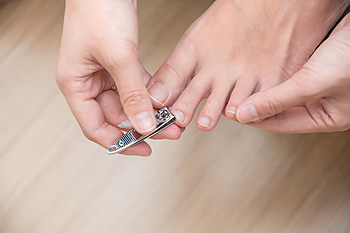 When the feet feel good, the overall health of the body is positively affected. There are several methods that can be implemented for daily foot care. These include using warm water to wash your feet every day, applying a good moisturizer, and carefully trimming the toenails. Research has indicated feet are larger in the afternoon, and it is beneficial to purchase shoes in the middle of the day to ensure a maximum level of comfort. If you use community pools, showers or locker rooms, it is advised to wear appropriate shoes, which can help prevent foot conditions such as athlete's foot or toenail fungus. If you would like additional information about proper foot care, please consult with a podiatrist who can answer any questions you have.
When the feet feel good, the overall health of the body is positively affected. There are several methods that can be implemented for daily foot care. These include using warm water to wash your feet every day, applying a good moisturizer, and carefully trimming the toenails. Research has indicated feet are larger in the afternoon, and it is beneficial to purchase shoes in the middle of the day to ensure a maximum level of comfort. If you use community pools, showers or locker rooms, it is advised to wear appropriate shoes, which can help prevent foot conditions such as athlete's foot or toenail fungus. If you would like additional information about proper foot care, please consult with a podiatrist who can answer any questions you have.
Everyday foot care is very important to prevent infection and other foot ailments. If you need your feet checked, contact Dr. Kevin Davis from Davis Foot & Ankle Centers. Our doctor can provide the care you need to keep you pain-free and on your feet.
Everyday Foot Care
Often, people take care of their bodies, face and hair more so than they do for their feet. But the feet are a very important aspect of our bodies, and one that we should pay more attention to. Without our feet, we would not be able to perform most daily tasks.
It is best to check your feet regularly to make sure there are no new bruises or cuts that you may not have noticed before. For dry feet, moisturizer can easily be a remedy and can be applied as often as necessary to the affected areas. Wearing shoes that fit well can also help you maintain good foot health, as well as making it easier to walk and do daily activities without the stress or pain of ill-fitting shoes, high heels, or even flip flops. Wearing clean socks with closed shoes is important to ensure that sweat and bacteria do not accumulate within the shoe. Clean socks help to prevent Athlete’s foot, fungi problems, bad odors, and can absorb sweat.
If you have any questions please feel free to contact one of our offices located in Springfield, and White House, TN, . We offer the newest diagnostic and treatment technologies for all your foot and ankle needs.
Read more about Everyday Foot CareNighttime Foot Cramps and Stretching the Feet
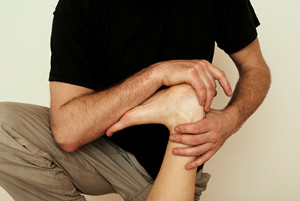 Patients who experience nighttime foot cramps are aware of the pain and discomfort these may cause. When stretching techniques are performed, the muscles contract to hold the stretch, and cramps may occur if they remain in this position. Relief is found when the specific stretch is avoided for several days, and this will give the muscles a chance to properly heal. If it is possible to point and flex the foot, it may help the foot to feel better. Many patients find comfort in gently massaging the area or soaking the foot in warm water. If you have cramps in your feet at night, it is suggested to consult with a podiatrist who can recommend proper stretching techniques.
Patients who experience nighttime foot cramps are aware of the pain and discomfort these may cause. When stretching techniques are performed, the muscles contract to hold the stretch, and cramps may occur if they remain in this position. Relief is found when the specific stretch is avoided for several days, and this will give the muscles a chance to properly heal. If it is possible to point and flex the foot, it may help the foot to feel better. Many patients find comfort in gently massaging the area or soaking the foot in warm water. If you have cramps in your feet at night, it is suggested to consult with a podiatrist who can recommend proper stretching techniques.
Stretching the feet is a great way to prevent injuries. If you have any concerns with your feet consult with Dr. Kevin Davis from Davis Foot & Ankle Centers. Our doctor will assess your condition and provide you with quality foot and ankle treatment.
Stretching the Feet
Stretching the muscles in the foot is an important part in any physical activity. Feet that are tight can lead to less flexibility and make you more prone to injury. One of the most common forms of foot pain, plantar fasciitis, can be stretched out to help ease the pain. Stretching can not only ease pain from plantar fasciitis but also prevent it as well. However, it is important to see a podiatrist first if stretching is right for you. Podiatrists can also recommend other ways to stretch your feet. Once you know whether stretching is right for you, here are some excellent stretches you can do.
- Using a foam roller or any cylindrical object (a water bottle or soda can will do), roll the object under your foot back and forth. You should also exert pressure on the object. Be sure to do this to both feet for a minute. Do this exercise three times each.
- Similar to the previous one, take a ball, such as a tennis ball, and roll it under your foot while seated and exert pressure on it.
- Grab a resistance band or towel and take a seat. If you are using a towel, fold it length wise. Next put either one between the ball of your foot and heel and pull with both hands on each side towards you. Hold this for 15 seconds and then switch feet. Do this three times for each foot.
- Finally hold your big toe while crossing one leg over the other. Pull the toe towards you and hold for 15 seconds. Once again do this three times per foot.
It is best to go easy when first stretching your foot and work your way up. If your foot starts hurting, stop exercising and ice and rest the foot. It is advised to then see a podiatrist for help.
If you have any questions, please feel free to contact one of our offices located in Springfield, and White House, TN, . We offer the newest diagnostic and treatment technologies for all your foot care needs.
Read more about How to Stretch Your FeetSoccer Players And Blisters
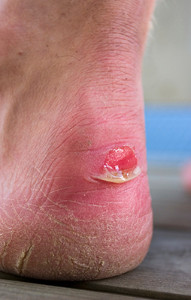 Many soccer players will develop blisters at some point while participating in their chosen sport. They typically form on the bottom of the foot or on the back of the heel. This is a result of consistent friction that comes from shoes that do not fit correctly. They are often painful, and a player’s natural instinct to avoid discomfort causes the gait to change. This is likely to increase the risk of an ankle or knee injury, and overall playing performance may be impacted as a result of the pain that is caused by a blister. Research has shown the first sign of a blister is a “hot spot”, which is a tender and warm portion of the skin where the friction has occurred. Keeping the affected area covered and dry is important while taking part in soccer events. Additionally, it is helpful to wear athletic socks that are made of synthetic material. There are methods that can be implemented, which may help to prevent blisters from developing. These include measuring your foot, which determines the correct shoe size, and purchasing shoes at the end of the day when the feet are at their largest. If you have a blister and would like additional information about the treatment and prevention of this ailment, it is suggested that you consult with a podiatrist.
Many soccer players will develop blisters at some point while participating in their chosen sport. They typically form on the bottom of the foot or on the back of the heel. This is a result of consistent friction that comes from shoes that do not fit correctly. They are often painful, and a player’s natural instinct to avoid discomfort causes the gait to change. This is likely to increase the risk of an ankle or knee injury, and overall playing performance may be impacted as a result of the pain that is caused by a blister. Research has shown the first sign of a blister is a “hot spot”, which is a tender and warm portion of the skin where the friction has occurred. Keeping the affected area covered and dry is important while taking part in soccer events. Additionally, it is helpful to wear athletic socks that are made of synthetic material. There are methods that can be implemented, which may help to prevent blisters from developing. These include measuring your foot, which determines the correct shoe size, and purchasing shoes at the end of the day when the feet are at their largest. If you have a blister and would like additional information about the treatment and prevention of this ailment, it is suggested that you consult with a podiatrist.
Blisters may appear as a single bubble or in a cluster. They can cause a lot of pain and may be filled with pus, blood, or watery serum. If your feet are hurting, contact Dr. Kevin Davis of Davis Foot & Ankle Centers. Our doctor can provide the care you need to keep you pain-free and on your feet.
Foot Blisters
Foot blisters are often the result of friction. This happens due to the constant rubbing from shoes, which can lead to pain.
What Are Foot Blisters?
A foot blister is a small fluid-filled pocket that forms on the upper-most layer of the skin. Blisters are filled with clear fluid and can lead to blood drainage or pus if the area becomes infected.
Symptoms
(Blister symptoms may vary depending on what is causing them)
- Bubble of skin filled with fluid
- Redness
- Moderate to severe pain
- Itching
Prevention & Treatment
In order to prevent blisters, you should be sure to wear comfortable shoes with socks that cushion your feet and absorb sweat. Breaking a blister open may increase your chances of developing an infection. However, if your blister breaks, you should wash the area with soap and water immediately and then apply a bandage to the affected area. If your blisters cause severe pain it is important that you call your podiatrist right away.
If you have any questions, please feel free to contact one of our offices located in Springfield, and White House, TN, . We offer the newest diagnostic and treatment technologies for all your foot care needs.
Read more about Blisters on the FeetFoot Pain May Develop from Wearing High Heels
 There are many people who enjoy wearing high heels. This type of shoe can enhance the appearance of the legs by making them look longer and thinner. Potential damage to the foot may be diminished if proper stretching exercises are frequently performed, thereby strengthening the foot. Many people may experience heel pain, and this may be a result of shortened calf muscles. There are many foot conditions that can gradually develop from wearing high heels. These may include ingrown toenails, bunions, or Morton’s neuroma, which is a form of nerve damage that occurs between the toes. If you would like additional information about how high heels can affect the feet, consulting with a podiatrist is recommended.
There are many people who enjoy wearing high heels. This type of shoe can enhance the appearance of the legs by making them look longer and thinner. Potential damage to the foot may be diminished if proper stretching exercises are frequently performed, thereby strengthening the foot. Many people may experience heel pain, and this may be a result of shortened calf muscles. There are many foot conditions that can gradually develop from wearing high heels. These may include ingrown toenails, bunions, or Morton’s neuroma, which is a form of nerve damage that occurs between the toes. If you would like additional information about how high heels can affect the feet, consulting with a podiatrist is recommended.
High heels have a history of causing foot and ankle problems. If you have any concerns about your feet or ankles, contact Dr. Kevin Davis from Davis Foot & Ankle Centers. Our doctor can provide the care you need to keep you pain-free and on your feet.
Effects of High Heels on the Feet
High heels are popular shoes among women because of their many styles and societal appeal. Despite this, high heels can still cause many health problems if worn too frequently.
Which Parts of My Body Will Be Affected by High Heels?
- Ankle Joints
- Achilles Tendon – May shorten and stiffen with prolonged wear
- Balls of the Feet
- Knees – Heels cause the knees to bend constantly, creating stress on them
- Back – They decrease the spine’s ability to absorb shock, which may lead to back pain. The vertebrae of the lower back may compress.
What Kinds of Foot Problems Can Develop from Wearing High Heels?
- Corns
- Calluses
- Hammertoe
- Bunions
- Morton’s Neuroma
- Plantar Fasciitis
How Can I Still Wear High Heels and Maintain Foot Health?
If you want to wear high heeled shoes, make sure that you are not wearing them every day, as this will help prevent long term physical problems. Try wearing thicker heels as opposed to stilettos to distribute weight more evenly across the feet. Always make sure you are wearing the proper shoes for the right occasion, such as sneakers for exercising. If you walk to work, try carrying your heels with you and changing into them once you arrive at work. Adding inserts to your heels can help cushion your feet and absorb shock. Full foot inserts or metatarsal pads are available.
If you have any questions please feel free to contact one of our offices located in Springfield, and White House, TN, . We offer the newest diagnostic and treatment technologies for all your foot and ankle needs.
Read more about Why High Heels Are Not Ideal for Healthy Feet
